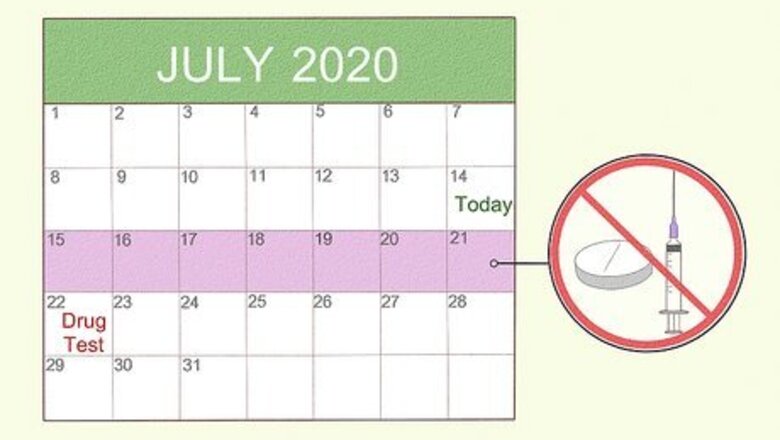
views
Preparing to Be Drug Tested
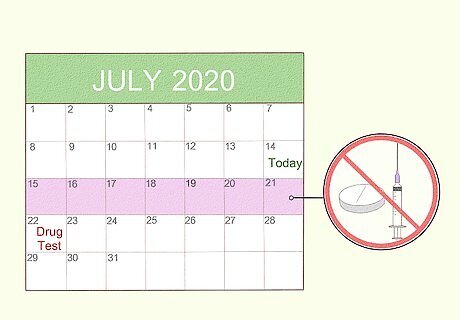
Give yourself as much time as possible. With every day that passes between the last time you used drugs and the date of the test, your chances of passing go up since each test is only effective for a limited time after drug use. If the drug test is administered by your employer, you'll likely get warning in advance of the test. If you're being tested because you're on probation, your tests are likely to be on a set schedule. Here are the average amounts of time a drug stays in your system enough to trigger a positive drug test: Marijuana: 1-7 days Crack (Cocaine): 2-3 days Heroin (Opiates) or Methadone: 1-3 days Speed/Uppers (Amphetamine, meth): 2-3 days Angel Dust/PCP: 7-14 days Ecstacy: 2-4 days Benzodiazepine: 1-4 days Barbiturates: 1-3 weeks Tricyclic Antidepressants: 2-7 days Oxycodone: 1-2 days
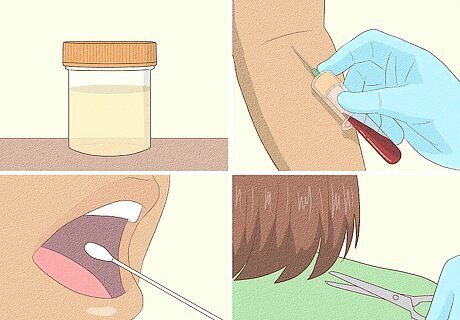
Find out what type of test you'll be taking. There are four types of drug tests: urine tests, blood tests, saliva tests and hair tests. The standard 5-panel test tests for amphetamines (speed, meth, crank, ecstasy), cannabinoids (marijuana, hash), cocaine (coke, crack), opiates (heroin, morphine, opium, codeine), and phencyclidine (PCP). Advancements in testing technology have made it difficult to fake tests, but knowing the differences between the tests can be helpful when it comes to your specific situation. Here's the breakdown: Urine tests are the most common type of tests administered by employers. They're the easiest tests to tamper with, since you have a small window of privacy during which you're supposed to provide a urine sample (provided you aren't being watched). Blood tests might be administered if you get pulled over and drug intoxication is suspected. This type of test is very difficult to pass if you recently used drugs, since it's effective at determining exactly how much is in your system. But if it's been several days since you've used, the test is more likely to come up negative than a urine test. Saliva tests are sometimes administered in place of either urine or blood tests since they're less invasive. They are a little less sensitive than blood tests. Hair tests are extremely difficult to fake. Up to 120 strands of hair are evaluated in a laboratory to determine whether they contain traces of drugs. Since it takes up to 2 weeks for a section of hair long enough to test to grow in, a hair test can't tell whether you used drugs in the past 2 weeks. However, traces of drugs can stay in your hair for up to 90 days, so it's an effective way to determine if you're a regular user.
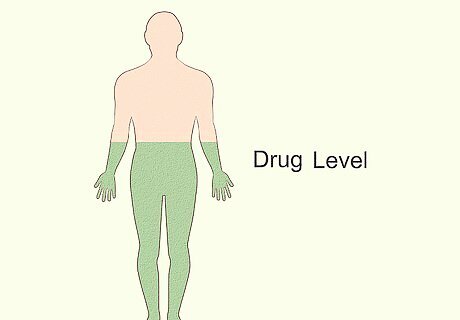
Try to figure out how much of the drug is in your system. Depending on how much you used and when, you might be able to pass a drug test the same day or the next day. The method you'll choose to pass a drug test depends in part on how much of the drug you think is still in your system. For instance, if you're just a casual user of marijuana, the drug might not be detectable after a few days. However, heavy use of marijuana, cocaine use, certain barbiturates, and other drugs are detectable even after 15 to 30 days. If you're a heavy, or "chronic" user of marijuana, the test you take will almost definitely read as positive. However, if you've only used it a few times, you have a decent chance of being able to flush your system and get a test that reads negative. Remember that if you're subjected to a hair test, anything you've used in the past 90 days (with the exception of the most recent two weeks) will show up. You might be able to pass a same-day drug test if you took the drug no more than 2 hours before the test (with the exception of pot and oxycodone, which will signal a positive test within 1 hour of use). Still, your best bet is to hold off on using drugs entirely until you’ve taken the test.
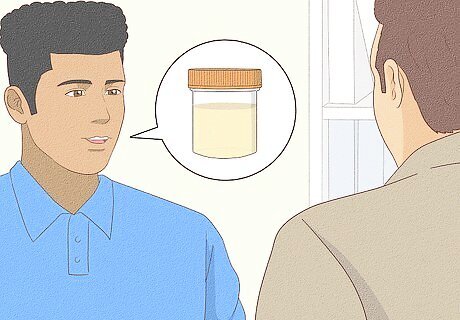
Know which test to choose if you get a choice. You won't always get to choose how you'll be tested for drugs, but sometimes you can decide whether you want to take a urine, blood, saliva or hair test. Instead of trying to tamper with a test, your better bet might be to choose the test that's least likely to show up as positive for you. Of course, there's no guarantee that the test will be negative, but it's worth knowing which one will give you the best chance of passing. If you've only used the drug a few times, and it was at least a week ago, your best bet is probably going to be a blood or saliva test, since most drugs leave your bloodstream after just a few hours or days. If you're currently high when you take the test, you probably want to opt for a urine test, because it's less sensitive than a blood test to exact levels of drugs in your system. Urine tests don't measure THC levels, so if marijuana is the issue, even if you fail the test there won't be proof that you were impaired at the time you took it. If you tried drugs for the first time in the last week or so, and you get the option to do a hair test instead of another one, that might be your best bet. Anything you did in the last few weeks won't show up, but drugs you used stretching back 90 days will. If you're a heavy user, try not to take a hair test, since it can pick up drugs in your system from months to years back, and it’s very hard to dispute.
Passing a Urine Test
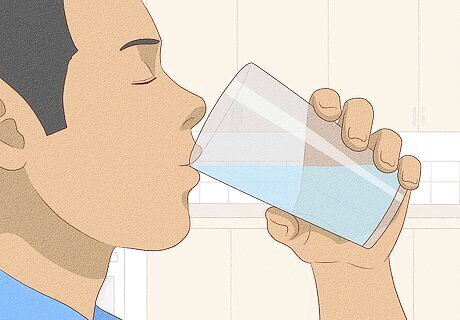
Drink a lot of water starting the day before the test. By increasing your intake of liquids, you will be able to (somewhat) dilute the test sample if you’ve used marijuana or cocaine. This won't work very well if you're a heavy user, but it could do the trick if you've only used a few times. There's no special drink or ingredient that will help to "flush" your system or cleanse you any better than water does. There is no evidence that substances like goldenseal, vinegar, niacin, or vitamin C have any effect on your levels of drug metabolites. Take some vitamin B pills the day before your test to make your urine look yellow. If it's too clear, test evaluators will be suspicious.
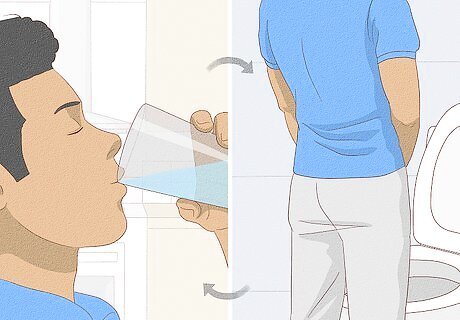
Urinate as much as possible before the test. This will help pump drug metabolites from your body. Drink a lot of water the morning of the test and make an extra effort to pee a lot before you take it. Boost your fluid output with some sort of diuretic. This will stimulate urination and will help flush your system. Diuretics include coffee, tea, and cranberry juice. Stronger diuretics, such as furosemide, are available by prescription only. Drug metabolites build up in your body while you're sleeping, so your first stream of the day will have a higher concentration. Make sure you urinate before you have to take the sample, and drink plenty of water so your urine will be more diluted. If you aren't being watched, make sure to pee in the toilet first and then in the sample cup; your initial urine stream will contain more metabolites.
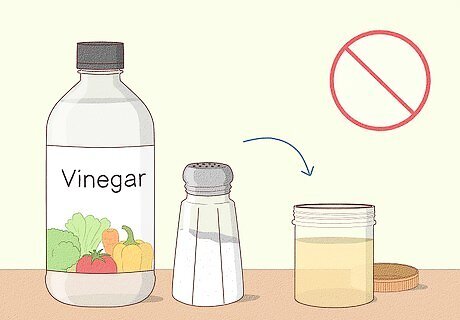
Don't try to mask or dilute the sample. Urine analyzers have seen it all and know to test for commercially available test-masking chemicals. Most household substances, such as bleach, salt or vinegar, will radically alter the pH of your urine, which will make it obvious that you have tampered with the sample. Diluting the sample by adding water can also raise red flags by changing the color and/or temperature of your urine; a clear sample will probably be rejected offhand, as will a lukewarm one. Ignore the rumor going around that drinking bleach will purify your urine. Drinking bleach can corrode your mouth, throat, and stomach, potentially killing you. What's more, it won't even mask your sample. Don't fall for false advertising on products that say your test will come up negative if you add the substance to your urine. They don't work.
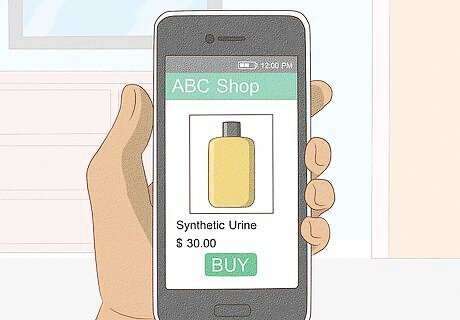
Consider substituting synthetic or clean urine for your own. This is a lot trickier than it sounds, so consider it a last-ditch attempt (and one for which you'll likely be penalized if you get caught). You can either buy fake urine or find a clean donor. The trick will be to maintain the sample at the proper temperature for the urinalysis (around 91 to 97 F) and smuggle it into the testing area. Kits containing both fake urine and the equipment needed to keep it at the right temperature can be purchased online or in smoke shops. Synthetic urine passes most tests, but some states have started testing for uric acid. Make sure your sample has uric acid listed as an ingredient. The synthetic urine should also have a smell. Scentless urine is suspicious to test evaluators. It's essential to keep the sample at the right temperature. If the temperature is too cold or hot, it's a dead giveaway that the sample has been tampered with. Using a donor is more risky than using fake urine, because you never know what else might show up in that person's test. You can test it yourself using a test strip available at smoke shops and most drugstores. Use the sample within 48 hours, after which it gets dark in color and the pH level begins to change.
Passing a Blood, Saliva or Hair Test

Try to delay a blood or saliva test. If there's any way you can delay taking the test, you'll have a much better shot at passing it. Most drugs are no longer traceable through a blood or saliva test after just a few hours, though some will remain in your bloodstream for up to 3 days or longer. Regardless of what type of drugs you took, your chances will be better if you can delay things for a day or more. If you can't delay a saliva test, you might be able to increase your chances of passing. If you are self-administering the cheek swab for a saliva test, which is supposed to be rubbed between your lower cheek and gum, rub the swab against your teeth instead. Then, rather than hold it between your cheek and gums for two minutes as directed, bite it between your molars. This probably won't work, but it's worth a try if you're on the spot. There's really no way to manipulate the sample for a blood test, since the test is not self-administered. Blood is drawn on the spot and immediately taken to be tested.
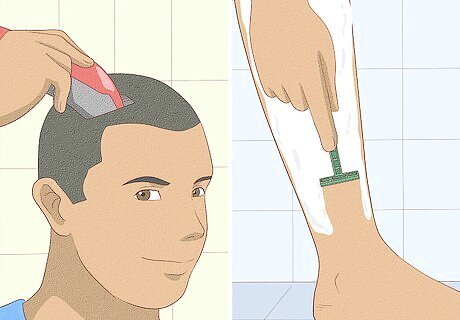
Shave your head and body before a hair test. Since your hair is cut on the spot during a hair test (rather than submitted by you), there's nothing you can really do to tamper with a hair test. However, if you don't have any hair to clip, you might be able to ask for a different type of test that will be easier to pass. If the people drug-testing you have never met you in person and you haven't already agreed to submit a hair sample, shave your head and the rest of your body (especially areas with longer hair) and casually inform them that you don't have any hair to submit. Then ask for a different test. Be sure you have a good story ready as to why your head is shaved. You could say your hair is thinning, or you're experimenting with a new style. Avoid inventing a serious medical condition (eg. cancer) to explain away your hairdo: this might create a lot of long-term complications. Since the hair sample only needs to be an inch long, be forewarned that they might ask for a sample from your leg, underarm, etc. This might be a good time to get an all-over wax and pretend to be a swimmer.
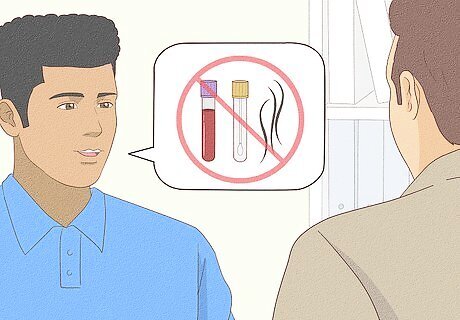
Find a way to get out of taking it entirely. Since blood, saliva and hair tests are so very difficult to cheat, you might want to push the issue and see if you can get out of taking it. Here are a few ways to do it: Ask for a urine test. If you think you could pass a urine test because your urine is diluted, or you don't want a blood test because it will show exactly how high you are at the time of the test, see if you can get a urine test instead. Say you consider it less invasive than the other methods. Exercise your rights. In some cases, the person administering the test might not have the right to test you. Get to know drug laws in your state and read up on your employer's drug testing policies. See if there's a loophole that can get you out of taking this test, or delay it to a later time.
Knowing Your Rights
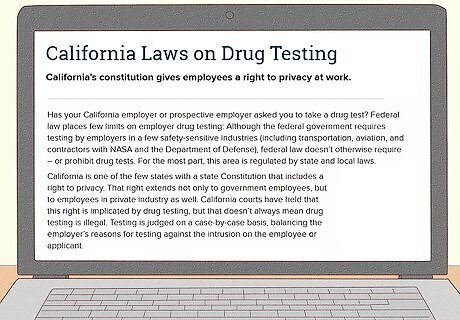
Look into your state's laws on drug testing policies. Each state has different policies when it comes to drug testing. There are laws dictating how both new applicants and current employees can be tested. In most cases, the employer is legally allowed to administer drug tests, but only if it gives proper notice and has the test administered by a state-run laboratory. Other common requirements include the following: All employees or applicants must be tested the same way. If an applicant is applying for a job, the fact that a drug test is part of the process must be clear from the start. In many cases, an employer isn't allowed to conduct random drug tests or blanket drug tests. In many cases, an employer can test an employee for drugs if the employer has reasonable suspicion that the employee is using (erratic behavior, inadequate work, etc.).
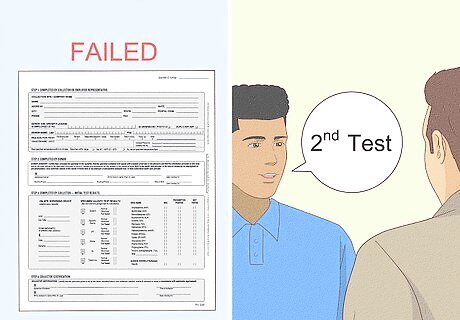
Ask for a second test if you get the opportunity. None of the drug tests are 100 percent accurate all of the time. Urine tests are the least accurate tests, but all of them are fallible. Use this to your advantage if you end up failing a drug test. Once you've failed, there's no harm in asking for another test; say you disagree with the results and would like to take it again.

Consider challenging the test if you don't pass. While an employer who followed all of your state's laws regarding testing usually has the right to fire you if you fail a test or refuse to take one, you might be able to challenge the test if it wasn't administered properly. Review your company's policy and your state's laws to make sure they match up. If they don't you might be able to get the test thrown out, giving you an opportunity to take it again. Check up on the lab administering and analyzing the test to make sure it's run by the state. See if your employer gave you adequate notice in advance of the test. Determine whether you experienced what you believe to be an unreasonable invasion of privacy, such as being asked to urinate in full view of someone watching.




















Comments
0 comment